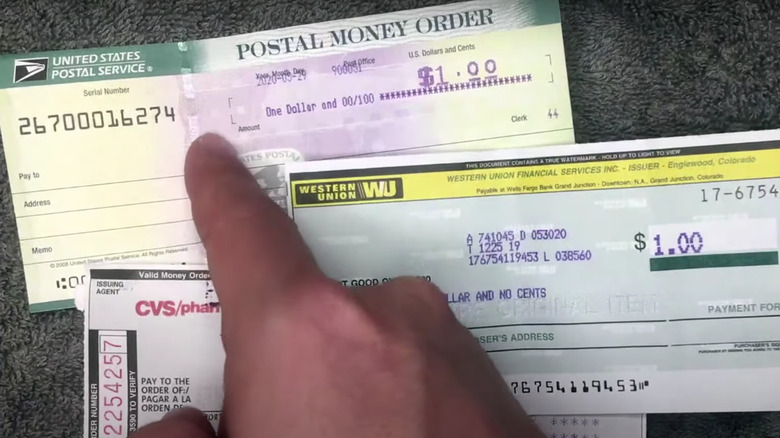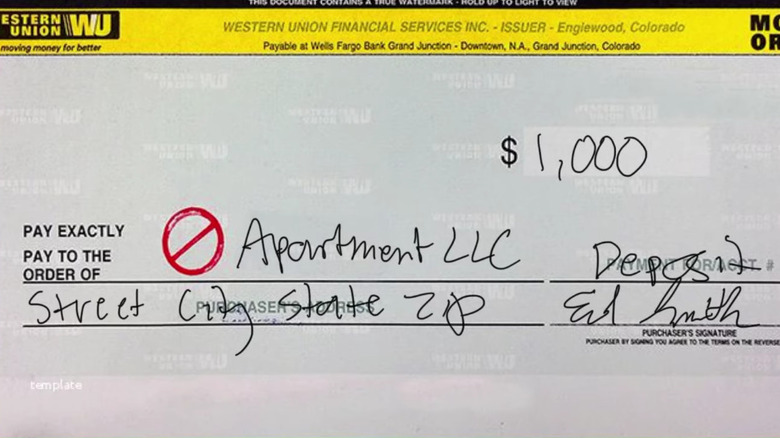How To Fill Out A Money Order Correctly
Money orders can be the perfect alternative to paying with a check. They're both incredibly similar as they are forms of paper payment that can be specifically written out to an individual or business. However, unlike a check, a money order doesn't contain your personal information such as an address, bank account, and transit number. Also, a money order is paid by you immediately with cash or debit, unlike a check where the funds would be debited from your bank account retroactively upon the receiver accepting the payment.
Another bonus to paying with a money order instead of a check is that because the amount of the money order has already been paid by you, you can't run the risk of it bouncing as you might by issuing payment with a check. However — unlike checks which are easily obtainable through your financial institution, usually at first at no cost — there is a fee associated with money orders. The United States Postal Service, for example, charges $2.00 for any money order made in denominations ranging from 1 cent to $500, and $2.90 for orders made from $500.01 to $1,000. These fees are up from only a few years ago, when the USPS charged $1.65 and $2.20, respectively.
Further, both checks and money orders also have to be properly filled out so that you, as the sender, can be certain the amounts and information are correct and that the intended receiver can deposit the funds without any problems. Let's take a look at the steps you need to take to fill out a money order.
The proper way to fill out a money order
If you choose to use a money order as payment in lieu of a check, you should know of a major difference between the two, which is the maximum amount you can write it out for. A standard check can be written for whatever sum you desire, so long as you have the funds in your account to cover it. However, a single money order cannot exceed $1,000. If you need more than that amount, then you have to purchase multiple money orders that equal the total you're looking for.
Beyond this, money orders and checks are quite similar in a number of ways, including the fields you need to fill out. When you purchase a money order from USPS or a financial institution, you need to first tell them the exact amount you require the money order to be for and then pay (in cash or with a debit card) that amount upfront, plus any additional fees.
As for filling out a money order, the form has a variety of blank fields you must fill in with a blue or black ink pen. The "Pay to the Order of" field will include the name and address of where the money is going. The "Sender" information will be your name and address. There will also be a space for a "Memo" (like a personal check) where you can include what the payment is for, i.e., an invoice number, rent, or some other purpose. Finally, your signature will be required to make the money order complete.

